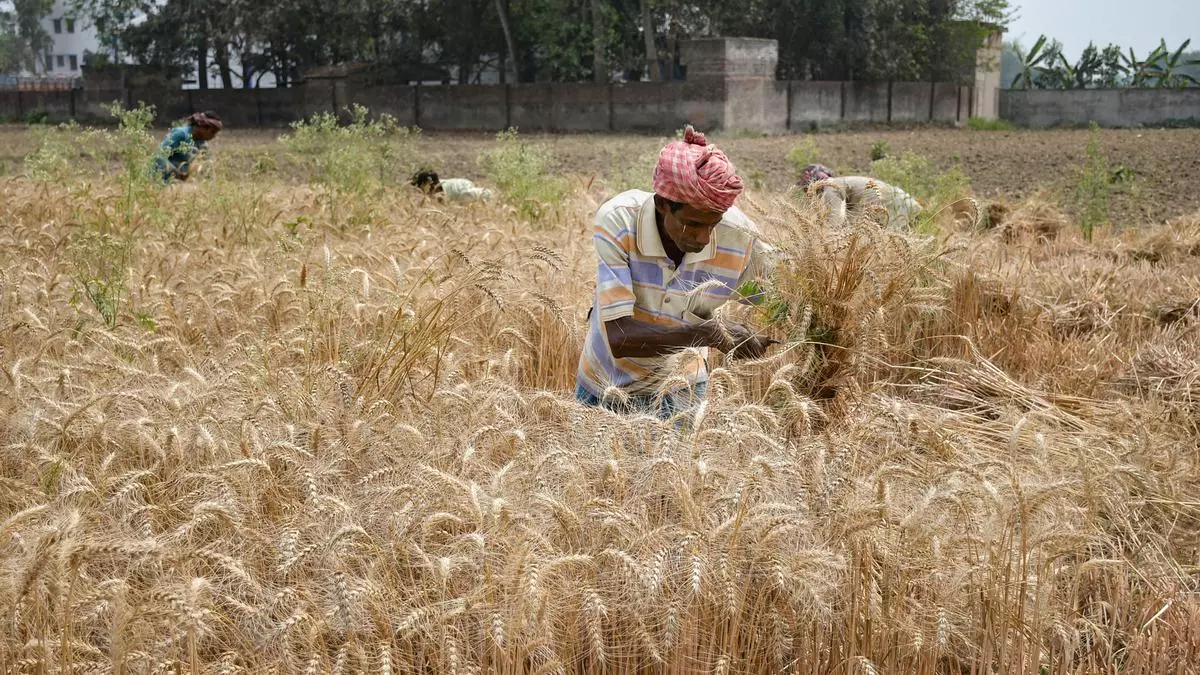With deficit in wheat acreage shrinking, India’s rabi sowing gains momentum
The deficit in wheat sowing deficit narrowed down to 5 per cent this week from over 11 per cent last week as farmers brought more area under the cereal. The development was expected since Diwali farm activities normally gather pace after Diwali. However, at least 100 lakh hectares (lh) more have to be brought under the crop by the month-end to overcome any ill-effect of El Nino, experts said.
According to the latest data, the sowing area under all rabi crops has reached 248.59 lh as of November 17, down by 3 per cent from 257.46 lh in the year-ago period. Wheat planting has reached 86.02 lh, which is 5 per cent lower from 91.02 lh a year ago. “Prospects of rabi crops seem to be good as per the feedback received from States,” said a senior Agriculture Ministry official.
During November 11-17, 37.51 lh were brought under wheat against 36.29 lh a year-ago, which is higher by 3 per cent.
Under-reporting in M.P., Rajasthan
“There was under reporting in Madhya Pradesh and Rajasthan due to engagement of staff in election duty,” said an official, adding that it will be adjusted in the coming weeks. Sowing of major wheat, pulses and some oilseeds are also slightly delayed this year due to late harvest of kharif-grown paddy in a few States, the official said.
Madhya Pradesh reported 3.44 lh higher area under wheat until Friday, 1.74 lh more under pulses, over 19,000 hectares under oilseeds. Similarly, Rajasthan reported 68,000 hectares higher area under wheat, but 1.92 lh less acreage under pulses and 3.53 lh lower area under oilseeds crops.
- Also Read: Climate-resilient varieties cover 70% of total wheat area, says IIWBR Director Gyanendra Singh
“There is a need to cover at least 60 per cent of the normal area under wheat by November-end, which is usually done, to avoid any possibility of lower yield in case there is an abnormal rise in temperature in February-March,” said S K Singh, an agriculture scientist. Singh suggested the use of potash in wheat which will help it to retain water level when temperature increases.
Avoiding MoP
It has been seen in last two years that may farmers are avoiding using Muriate of Potash (MoP) since it costs higher at about Rs 1,700-1,900/bag of 50 kg against Rs 1,350/bag Diammonium Phosphate (DAP). Earlier, both MoP and DAP used to be sold at same price.
Winter-grown pulses acreage has reached 65.16 lh compared with 69.37 lh, down by 6 per cent ven though a higher area has been covered under lentil (masur). The sowing area of major rabi pulse chana (gram) is down by 10 per cent to 44.66 lh from 49.64 lh and that of lentil up by 15 per cent at 8.76 lh from 7.6 lh.
In coarse cereals, the sowing area has reached 18.03 lh, up by 14 per cent from 15.85 lh. Jowar acreage has been reported at 12.38 lh, up by 32.7 per cent from 9.33 lh, mainly contributed by Maharashtra which received scanty rainfall in monsoon season. Maize acreage is also down at 3.21 lh from 3.49 lh year-ago.
Sowing of rabi oilseeds has reached 71.74 lh, lower from 73.17 lh year-ago, in which mustard acreage reached 68.55 lh, down from 69.31 lh in the corresponding period in 2022.
Paddy acreage reached 7.65 lh against 8.05 lh a year ago and the maximum acreage has been reported from Tamil Nadu.
In the 10 reservoirs in the northern region in Himachal Pradesh, Punjab and Rajasthan, the storage level was at 74 per cent of their combined storage capacity of 19.663 billion cubic meters (BCM) as of November 16, whereas it was 83 per cent in the year-ago period. The average storage of the last ten years as of November 16 is 73 per cent of capacity.
